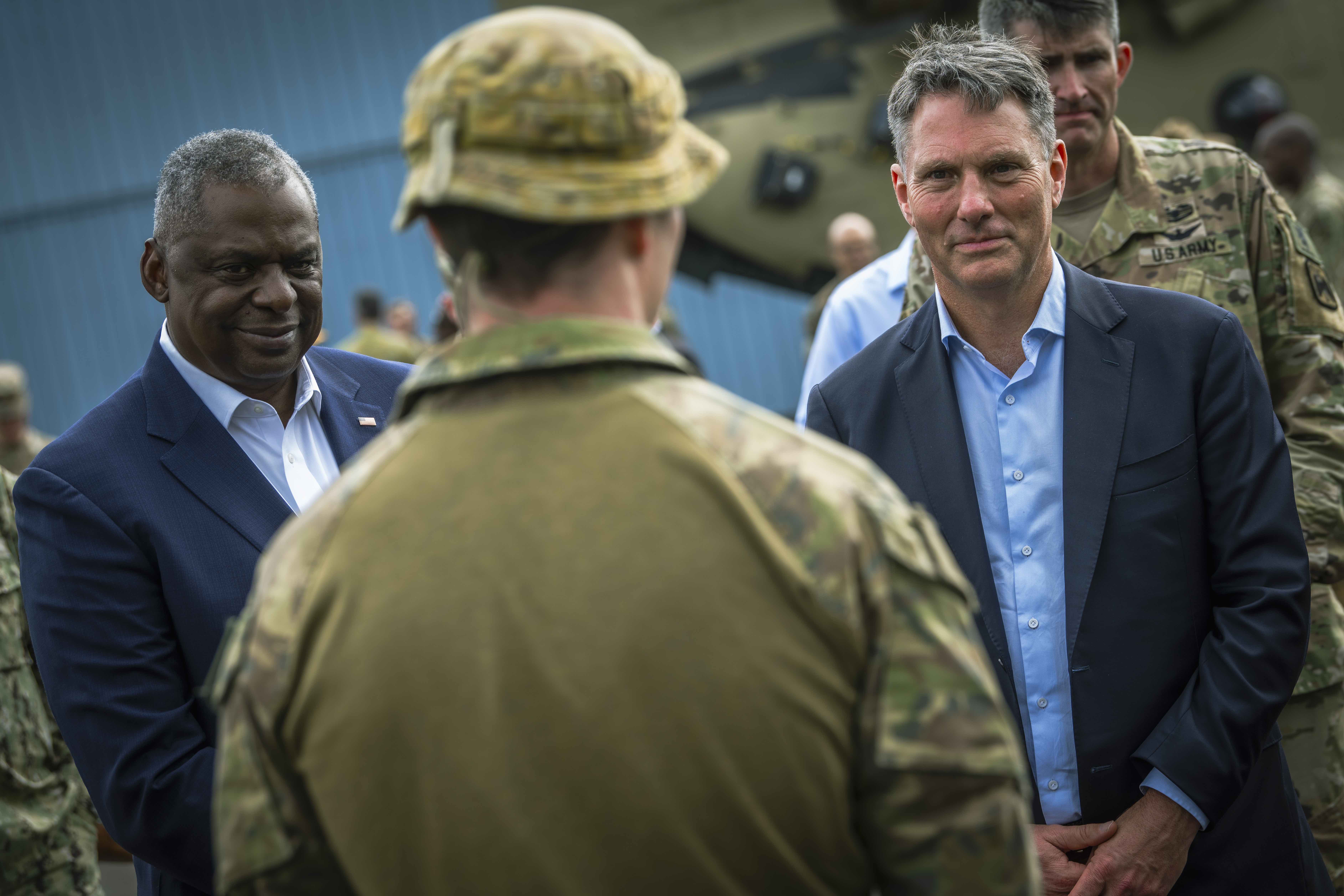
CANBERRA, AUSTRALIA – U.S. and Australian officials laid the groundwork to host more U.S. forces in Australia, officials from both countries said on Saturday.
Deepening that long-standing cooperation through the further “operationalization” of the alliance was a key focus of the 33rd Australia-U.S. Ministerial Consultations (AUSMIN) meeting in Brisbane, Australian Minister for Foreign Affairs Penny Wong said on Saturday.
Australia and the U.S. had made good progress on a range of commitments made at last year’s iteration of AUSMIN, Wong said. Much of what we spoke about last time in Washington has been “operationalized,” she said.
These include commitments to enhancing air bases in Australia’s north, coordinating capacity-building efforts in the South Pacific, continuing the development of the AUKUS “optimal pathway,” and easing U.S. Defence Export and Information controls applied to Australia. In particular, Marles highlighted U.S. progress on export control reform, saying that Australia was “very grateful” for the work of the Biden administration and Congress.
Secretary of Defence Lloyd Austin said that new initiatives announced during AUSMIN would help “bolster deterrence” in the Indo-Pacific through cooperation with Australia. In particular, he flagged an increase in the frequency and duration of U.S submarine visits and the establishment of a rotational U.S Army watercraft presence in Australia as critical.
“We’re introducing new rotations of US Army watercraft and expeditionary submarine visits to Australia,” Austin said. “These efforts will bolster deterrence by strengthening our interoperability and enhancing our sustainment and logistics capabilities for critical missions.”
As well as deploying watercraft, the Army will also expand its logistics capabilities in the country. Once Talisman Sabre concludes, the U.S. Army will practice prepositioning equipment in Australia by transporting supplies to Bandiana, north of Melbourne. The Army will also develop an “Enduring Logistics Support Area” in Queensland to permanently house prepositioned equipment.
Existing efforts under the Enhanced Air Cooperation program to upgrade facilities at Australian bases at Tindal and Darwin will continue, Austin said. The U.S. will begin scoping work at RAAF bases Scherger and Curtin to determine any upgrades that could be made.
The U.S. Navy will also establish a rotational presence in Australia made of reconnaissance and maritime patrol aircraft, Marles said. The aircraft, based primarily out of Australia’s northern bases, will help “[enhance] maritime domain awareness” according to Secretary of State Antony Blinken.
While Japan wasn’t represented at the meetings, it was a major focus of discussion. Australia and the U.S. “endorsed plans for enhanced trilateral cooperation with Japan” in Australia that will include “F-35 training and cooperation,” Austin said. The meetings also flagged future trilateral Integrated Air and Missile Defence (IMAD) discussions.
Australia’s effort to indigenously produce advanced guided weapons was also given a boost with Austin confirming plans to support the development of Australian industry.
Initially, it would involve helping Australia produce Guided Multiple Launch Rocket Systems (GMLRS) by the end of 2025, he said. In the future, however, he indicated that it may expand. The U.S. also committed to supporting Australia to maintain and overhaul its own SM-2 missiles and MK-48 torpedoes, used aboard its Hobart class destroyers and Collins-class diesel-electric attack submarines.
Meanwhile, an Australian helicopter crash, leaving four aircrew missing, during Exercise Talisman Sabre cast a somber note over the proceedings
Shortly after 10:30 p.m. local time Friday, an Australian Army MRH-90 Taipan ditched off the coast of Hamilton Island, Queensland. The four aircrew members are yet to be located, according to the Australian Department of Defence. Australian Deputy Prime Minister Richard Marles said this year’s AUSMIN consultations had been conducted with a “heavy heart” due to the incident.
Marles highlighted the ongoing search and rescue effort as another example of Australian and U.S. forces “working closely together” in an operational environment.
“We are reminded that as our defense force personnel have been side by side today, they have in fact been side by side with each other for more than a century,” he said.




